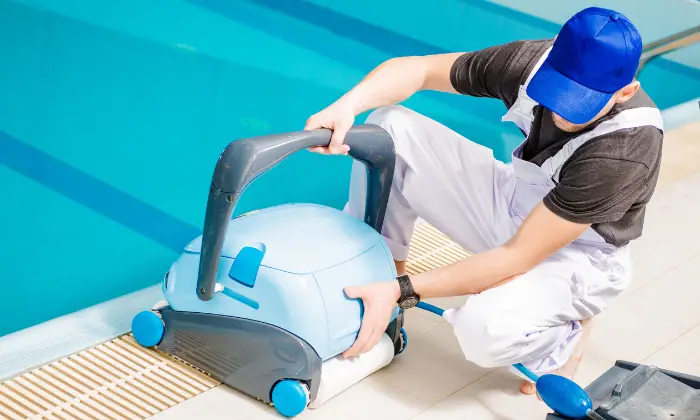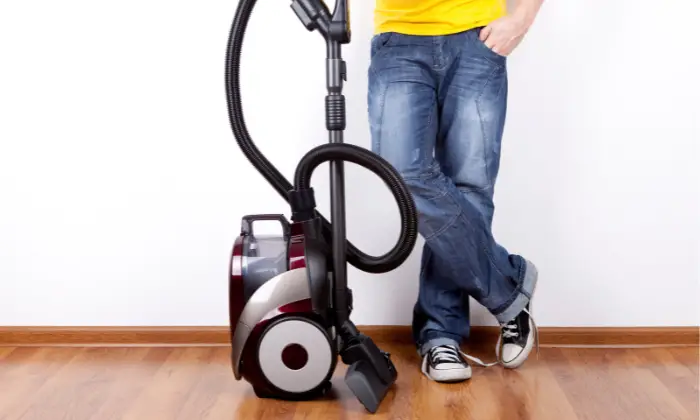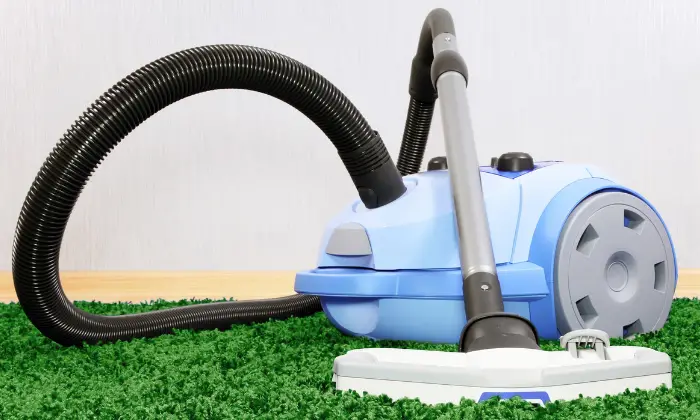
Vacuum cleaners are one of the most popular household appliances and for a good reason. They’re incredibly efficient at cleaning messes and are really simple to use. In this blog post, we’ll explore the science behind vacuum cleaners and How does a vacuum cleaner work physics.
We’ll discuss the cleaning process with a vacuum cleaner and some myths people commonly believe about vacuum cleaners.
The Process of Cleaning with a Vacuum Cleaner
When you use a vacuum cleaner, the suction force it produces pulls dirty particles and debris up from the floor. The filter inside the machine traps these particles, which are then sent to the air intake, where they are sucked into the engine. This cleaning process repeatedly happens if you’re using your vacuum cleaner, so you must correctly align your machine with the floor surface.
How does a vacuum cleaner work?

The vacuum cleaner works by creating a powerful suction force. A nozzle creates this force on the suction head, which seals against the floor surface to suck dust particles into the machine.
The motor constantly runs at a constant speed so it can continue cleaning even if there are sudden changes in air pressure (like when you open a door). The cleaner tube runs from the engine to the front of the machine, where all the dirt and debris are sucked into the machine.
The end of this tube typically has a large brush connected with a hose, designed for cleaning carpeting, so it’s essential to keep it clean!
What is the physics behind vacuum cleaners?

Vacuum cleaners operate based on Bernoulli’s Principle, which states that the pressure decreases as the speed of air increases. Air will always flow from a high pressure area to a low pressure region to balance the pressure drop or pressure level.
So, How does a vacuum cleaner work in physics? Let’s see the work of different parts –
- Reverse or Negative Pressure: The most straightforward way to explain how a vacuum can suck up darts and debris is to think of each like a straw. When you take any sip of a drink through a straw, sucking creates a negative air pressure inside the straw: a pressure lower than that of the surrounding atmosphere. A vacuum cleaner creates negative pressure inside, causing air to flow into it, much as in space movies, when a breach in the spaceship’s hull sucks people into space.
- The Motor: To generate negative pressure, vacuum cleaners employ an electric motor that blows a fan, drawing in air particles and other particles trapped within it and pushing them outside the other side. After a few seconds, you may assume that it will no longer function since forcing so much air into a confined area is impossible. To get around this, the motor’s exhaust outlet vents the air away from the vacuum, allowing it to work typically.
- Attachments or accessories: The air doesn’t just breeze through on its way out the other side. That might seriously harm people who use the vacuum. Why? On top of the dirt and debris that vacuum cleaner picks, it also collects almost invisible particles to the eye. If inhaled in larger quantities, they can cause damage your lungs. Since the bag or canister traps not all dust particles, the vacuum passes the air through at least one filter and often a HEPA filter to remove almost all dust. Only now is the atmosphere safe to be breathed again.
- The Filter: The power of a vacuum cleaner is determined not just by the power of its motor but also by the size of the intake port, the part that sucks the dirt. Since forming the same quantity of air through a narrower channel necessitates that it move faster, the smaller the diameter of the intake, the more suction power is produced. This is why vacuum cleaner attachments with narrow, small entry ports seem to have a much higher suction than larger ones.
Myths about Vacuum Cleaners

You should be aware of few myths about vacuum cleaners:
1) Myth: Vacuum cleaners can’t remove dirt from hard surfaces like tiles or granite.
This is false – vacuum cleaners can actually remove a lot of dirt and debris from hard surfaces. In fact, many people use a vacuum cleaner to clean their granite countertops!
2) Myth: Vacuum cleaners are only suitable for cleaning floors.
This is also false – you can use vacuum cleaners to clean any floor surface, including carpets and rugs. Be sure to use the correct type of vacuum cleaner for the job!
Related Questions about How does a vacuum cleaner work physics
How does a canister vacuum cleaner work in principle physics?
In principle, a canister vacuum cleaner uses suction to collect dust and dirt. The suction is controlled by the amount of water in the motor. As the motor turns the small gear wheels that prop up the dustbin, it pulls air in through the filter and exhausts it from the machine.
What is a vacuum in science simple?
A vacuum is simply a space with lower air pressure than atmospheric pressure. This makes moving objects (due to their weight and surface area) possible through fluids or gases much faster than usual. When you put an object into a vacuum, you will draw the object towards the suction side of the vacuum cleaner. This is because the air pressure on the suction side of the vacuum cleaner is lower than the atmospheric pressure outside of the vacuum.
What is the vacuum key principle?
The vacuum principle states that when a substance is in contact with higher pressure, such as air or water, it will pull particles up. This phenomenon can clean surfaces by sucking up dirt and dust.
How does the vacuum work physics?
A vacuum cleaner uses suction to pull all the dirt, hair, and debris toward the machine. This suction is created by the motor turning the wheel that sucks up the dirt, hair, and other debris. To fully understand, please read the entire blog.
Conclusion
Vacuum cleaners are one of the most popular household appliances. They are used to clean floors, carpets, and furniture. However, many people don’t know the physics behind vacuum cleaners. This blog post explains How does a vacuum cleaner works physics and gives you the basic idea. Thanks for reading!









